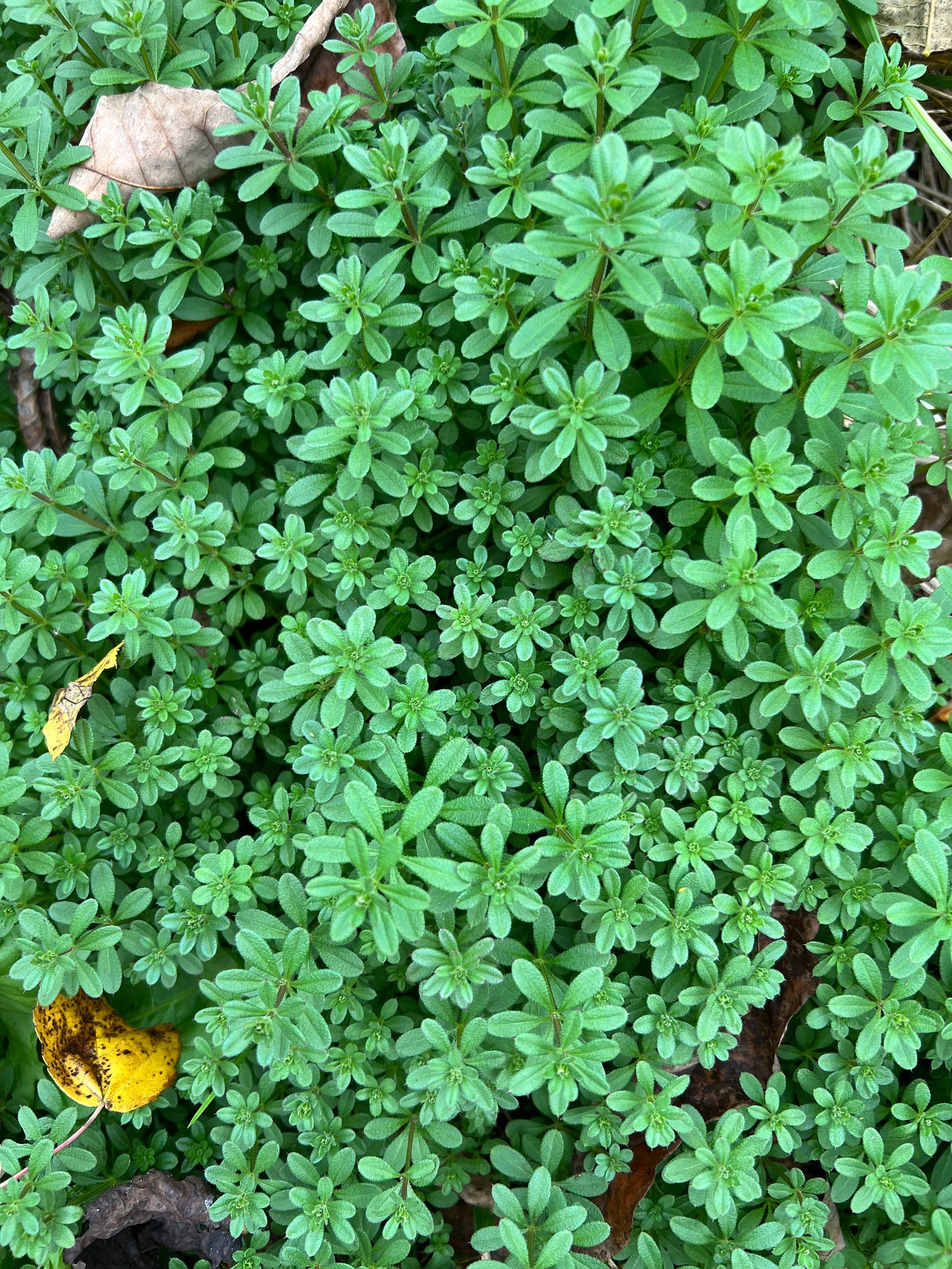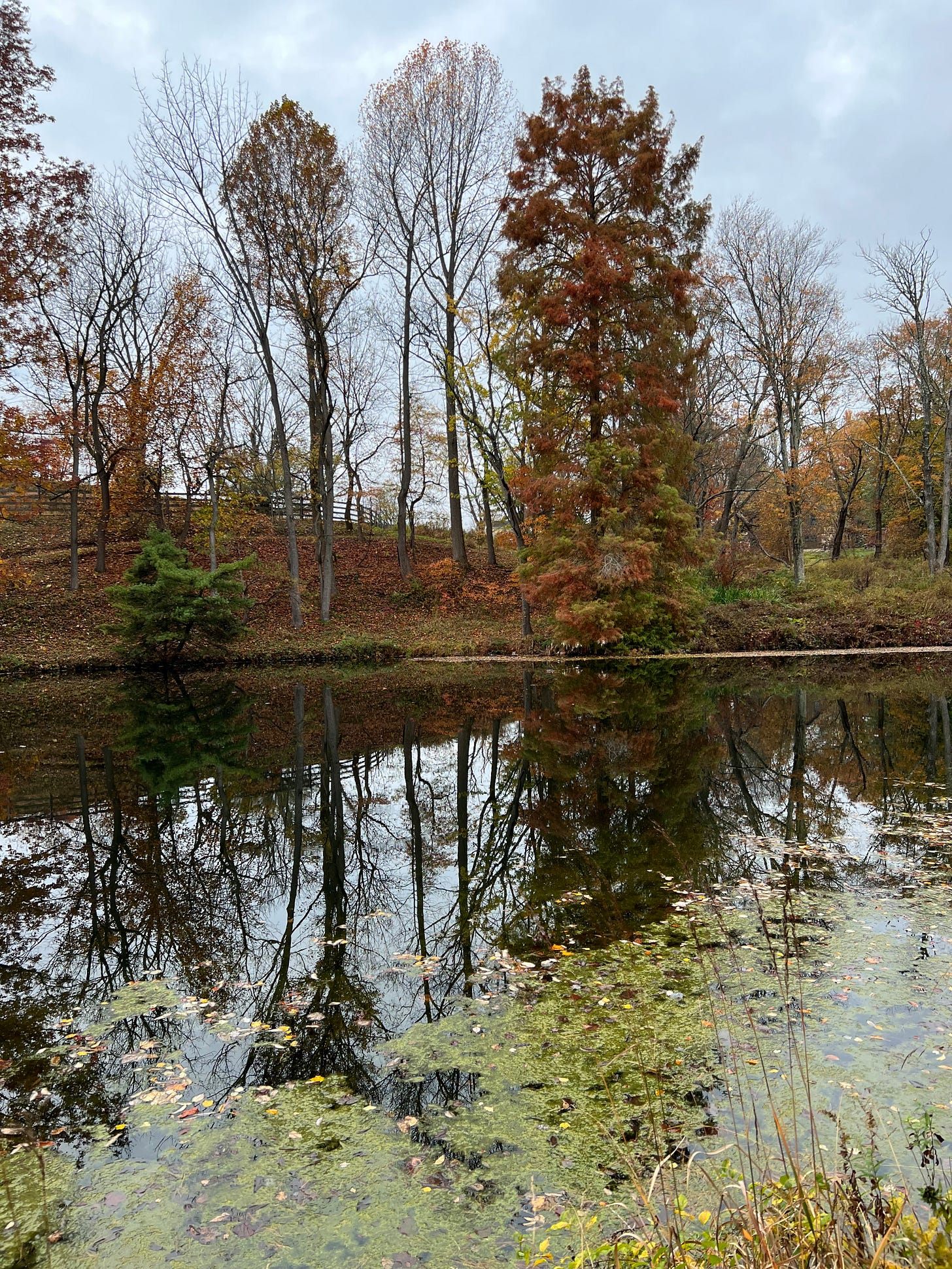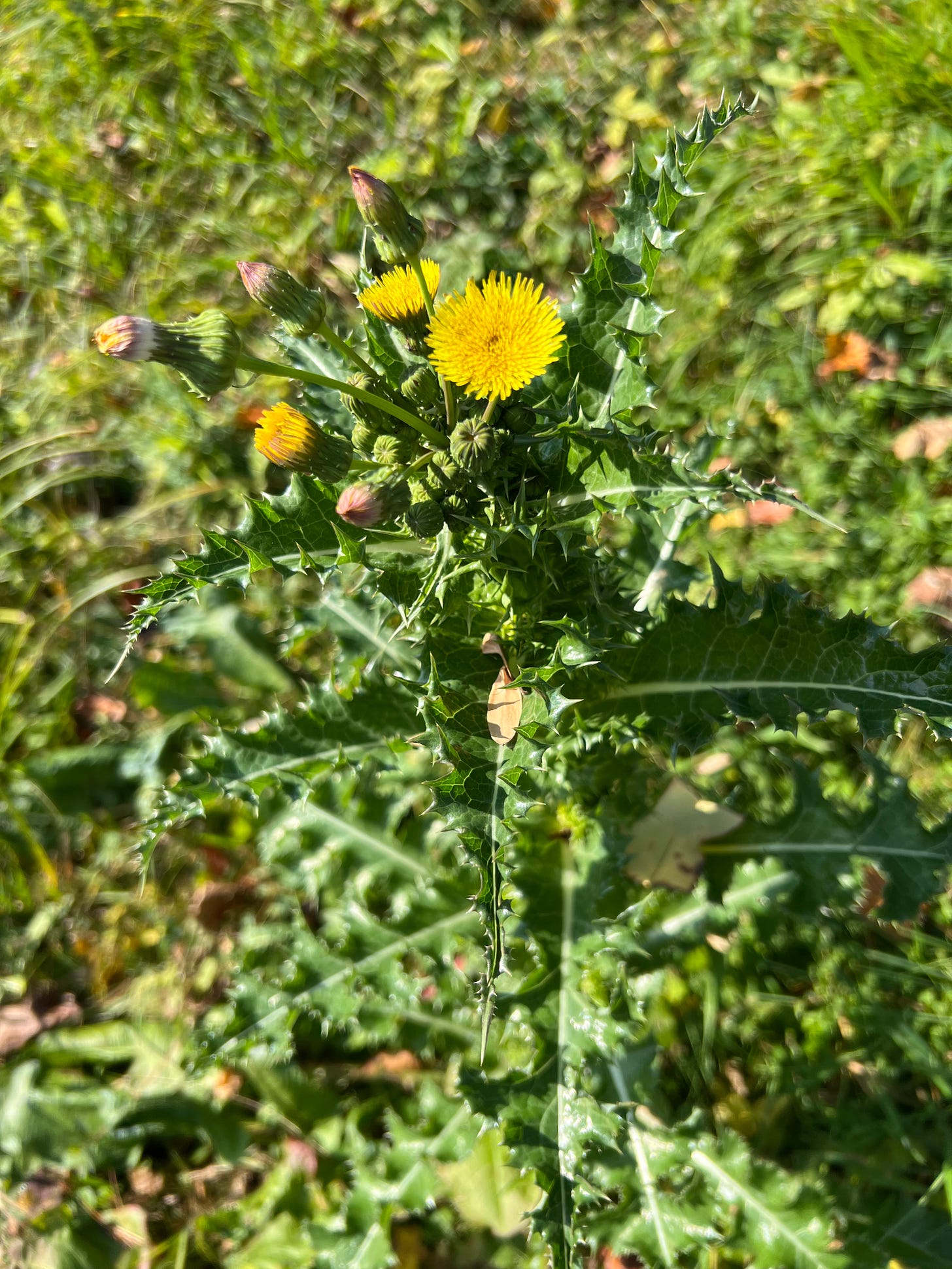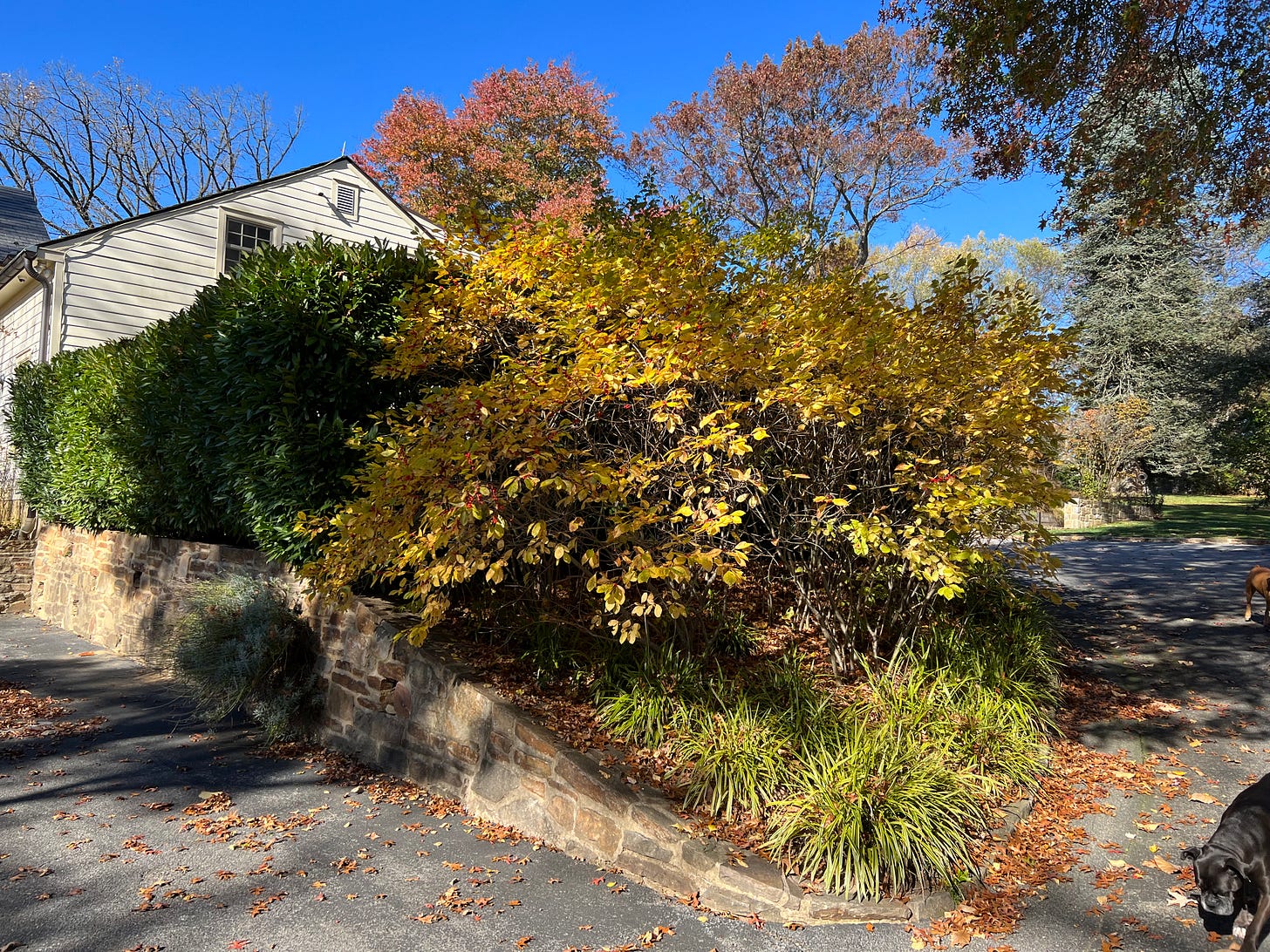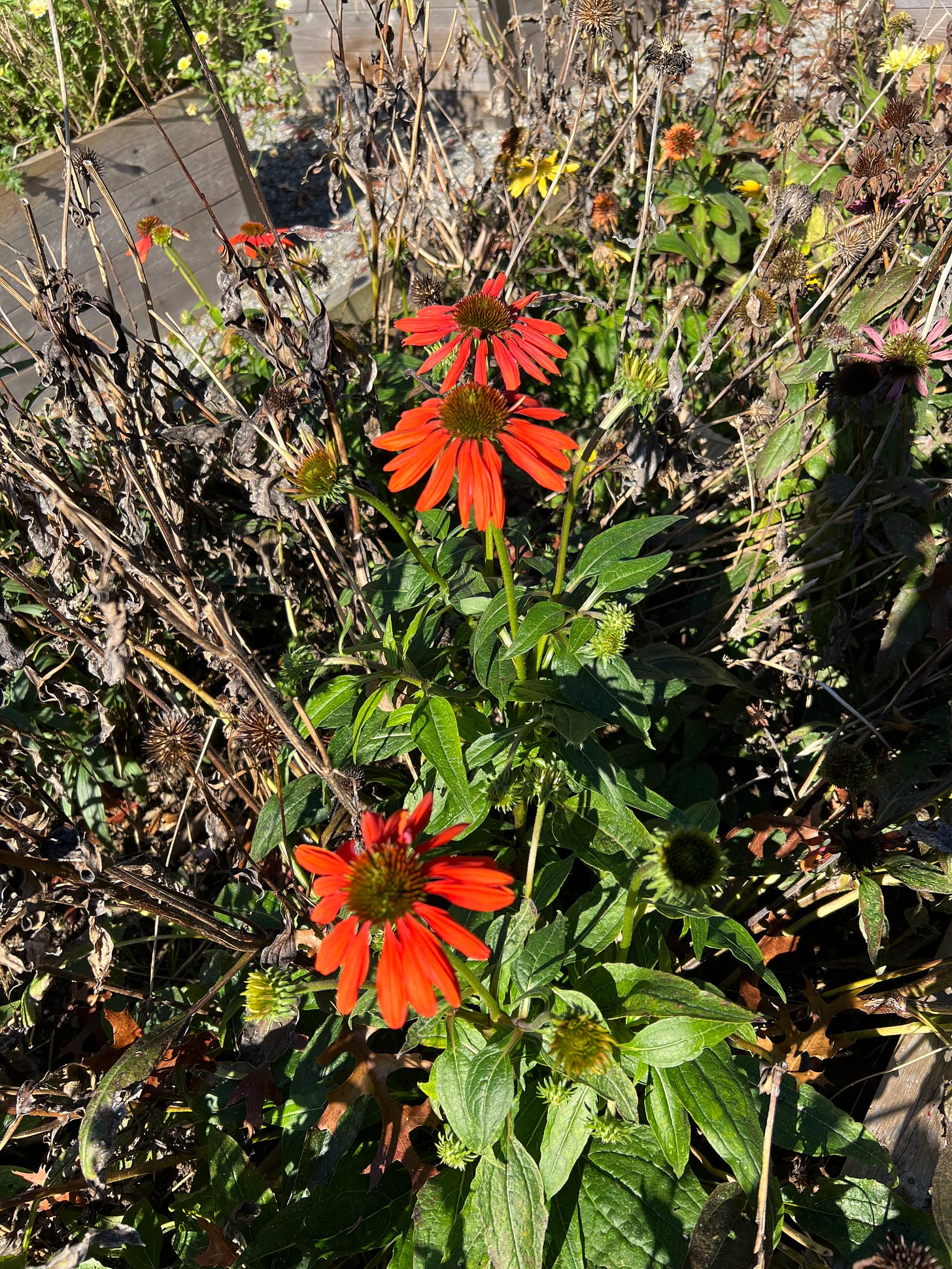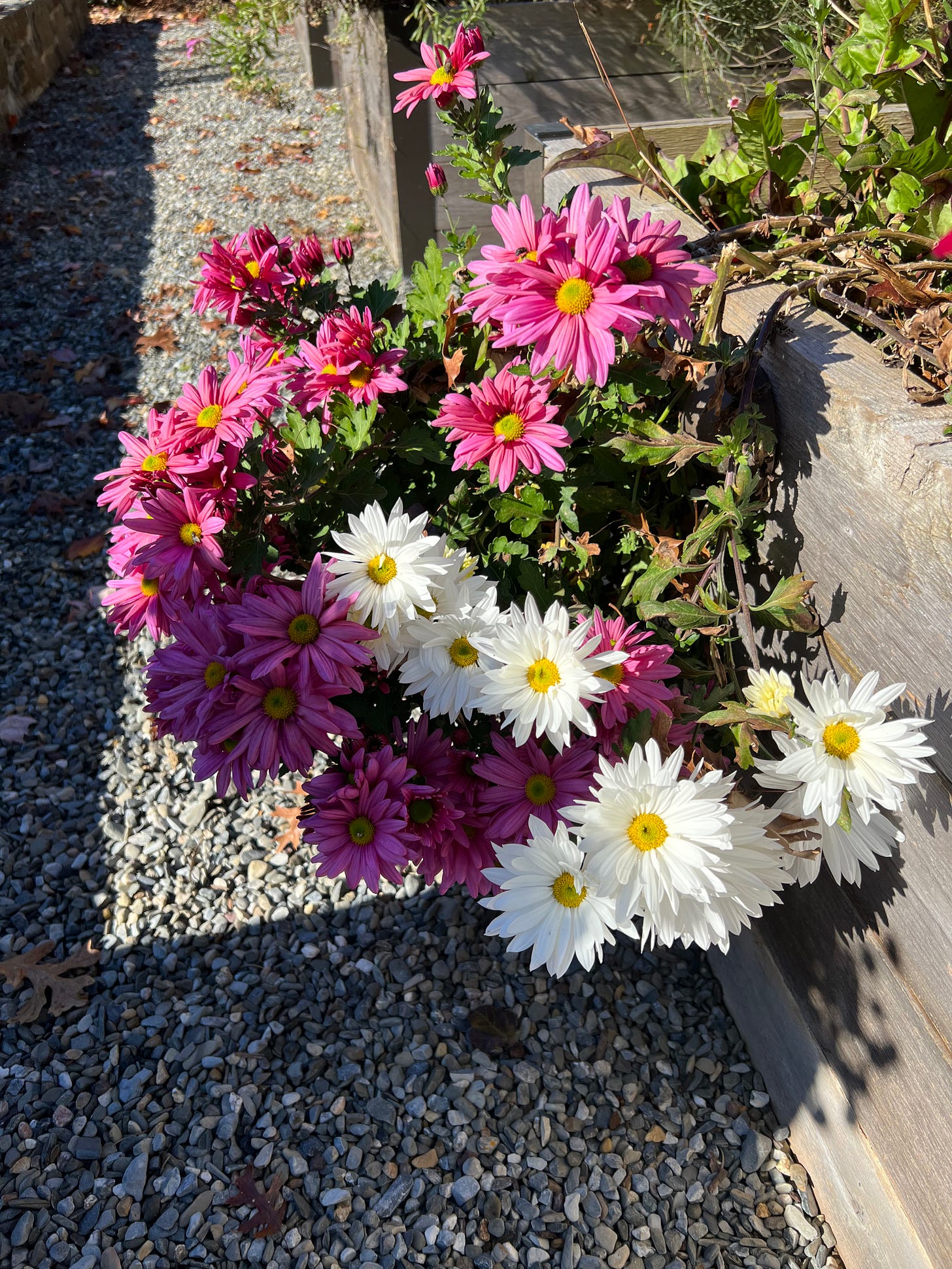Thoughts of Spring. Wait, what?!
Puddock Hill Journal #56: We just had our first frost, so what’s spring got to do with it?
Before I get to this week’s post, I hope I can entice you to pick up a copy of my latest novel, We Once Were Giants. From a reviewer:
"Fishman's writing transports you into a future where climate change and pollution have continued unchecked, to their inevitable conclusion. But this isn't just about climate change, it's about people and the types of societies we can build. I was so engaged with the characters and their stories that it wasn't until I was more than half-way through that it struck home that this isn't just a story, it's a warning. This book does this without ever reading like a lecture. Highly recommend.”
We had our first frost of the season this week, so why do my thoughts drift to spring?
To garden is to hope. Even the gardeners who are too wise to anticipate perfection yearn for the success of each plant they put into the ground and to see lovely unity in the garden they tend.
To backyard steward in the Anthropocene is not just to hope but to hope against hope. We want beauty, too, but we want more than that. We want to stand athwart the environmental degradation all around us and yell Stop! We want to anchor an ark where the last bits of nature can live unmolested. We want to contribute to the web of life at a time when so much of nature is under assault. We have set a tall order for ourselves.
Suddenly—and even after an eerie fall warm spell—here at Puddock Hill many leaves are down. With the exception of the pin oaks that always hold on late, the deciduous trees will likely be bare in another two weeks. The planting beds, which we mulch with about six inches of whole leaves, already have enough depth for winter.
My thoughts turn to all the trees we planted a few years ago. Bare—or nearly so—the smallest of them don’t look like much to the casual observer. But if you’d been studying them and cheering them on as much as I have, you’d perceive much progress. Never enough, mind you, since in most cases I’m trying to establish woodland edges, but sufficient signs of growth to feed my hopes.
One of the problems we faced when we set out to rewild was the condition of the woods. For the most part, over-browsing deer have destroyed the native understory (both shrubs and younger trees) and the native herbaceous layer, so that the woods are thin and impoverished. As a consequence, there’s a paucity of leaf litter, and the herbaceous layer contains many invasives. The trees we planted will one day add shade and contribute to the depth of leaf litter, but that’s still a long way off, and impatience causes my mind to drift to spring.
In the riparian area below the big pond, the east woods, and the dry hillside above the big pond, I imagine the young trees next year achieving enough growth to begin to shade out the usual invasive suspects and to contribute further to their own wellbeing by sharing mycorrhizal fungal relationships and establishing a healthier forest floor.
Since so many of these trees have been planted along the perimeter, my short-term ambition is to see them crest the top of the deer fence, which provides a handy measuring line for sure, but which I also want to have hidden one day. A few of the trees did grow that tall this year, primarily the fast-growing tuliptrees in sunnier spots along the east woods and sycamores below the big pond embankment.
We have fourteen volunteer trees in our beds. We’ll transplant all but one black cherry that’s growing in a bed we cut into the lawn a couple of years ago, but where the sun has proven too harsh for the azaleas we planted there. The cherry found a nice place and may help the azaleas, so we’ll leave it.
Outside the deer fence along the road, where we’re also trying to establish woods, I plan to transplant two tuliptrees, two black walnuts, a white oak, and two black cherries. Most of the trees we installed in that area have done well, but we need more. I can’t wait to see how these trees grow next year, and I wonder when they’ll start throwing off enough leaves to begin forming a true forest floor.
The final five black cherries (it was a good year for cherries!) we will divide between the wet woods and the area above the big pond, where unfortunately several newer trees didn’t make it through the spring 2023 drought.
Two other places I find myself directing hopes are the wet meadow and the natural slope between the lawn and the wet woods. The latter area was one of the first we stopped mowing regularly when we embraced the principles of backyard stewardship. Unfortunately, Japanese stiltgrass successfully invaded big swaths of these areas this summer, forcing us to partially mow and string trim them down. When we decided to remove the native grasses that we had growing in the patio garden, we moved them to the natural slope and the wet meadow. I long to see the native grasses suppress the stiltgrass. That hope may not be fully justified by experience, but I can dream, can’t I? It’s easiest to do so now when there are few signs to discourage me.
In fact, among all the death of fall, how can I help but look to next spring? I don’t want to overstate this, because of course autumn has its own beauty, but no sooner do I get a good look at the bones of the landscape than my mind jumps to the aforementioned places for improvement and so many others.
There’s the bed on the bridge where, after a series of failures, we’ve had great success with native achillea, but we need more.
There’s the tweaks we made in the patio garden. Will the plants we installed fill in as hoped? Will the prior successes come back as strong?
There’s the pickerelweed we sank selectively in the water along the shallow edges of the big pond. Will it spread as planned? Will it help fight the algae and promote more pond life?
I can’t say yet, but hope springs.
Native catchweed bedstraw (Galium aparine) grows lush in the wet meadow:
A tall native bald cypress (Taxodium distichum) (center right) gets ready to drop its needles at the edge of the big pond:
Native oakleaf hydrangea (Hydrangea quercifolia) pops with fall color by the tenant house:
Non-native spiny sowthistle (Sonchus asper) flowers on the big pond embankment:
A giant seed pod of native bigleaf magnolia (Magnolia macrophylla) lies on the ground:
Winterberry holly (Ilex verticillata) shows lovely yellow fall color by the dog pen:
A few echinacea flowers hung on through early frost in the raised beds:
These chrysanthemums in the raised beds started as a Mother’s Day gift from Wegman’s, and we got our money’s worth:

